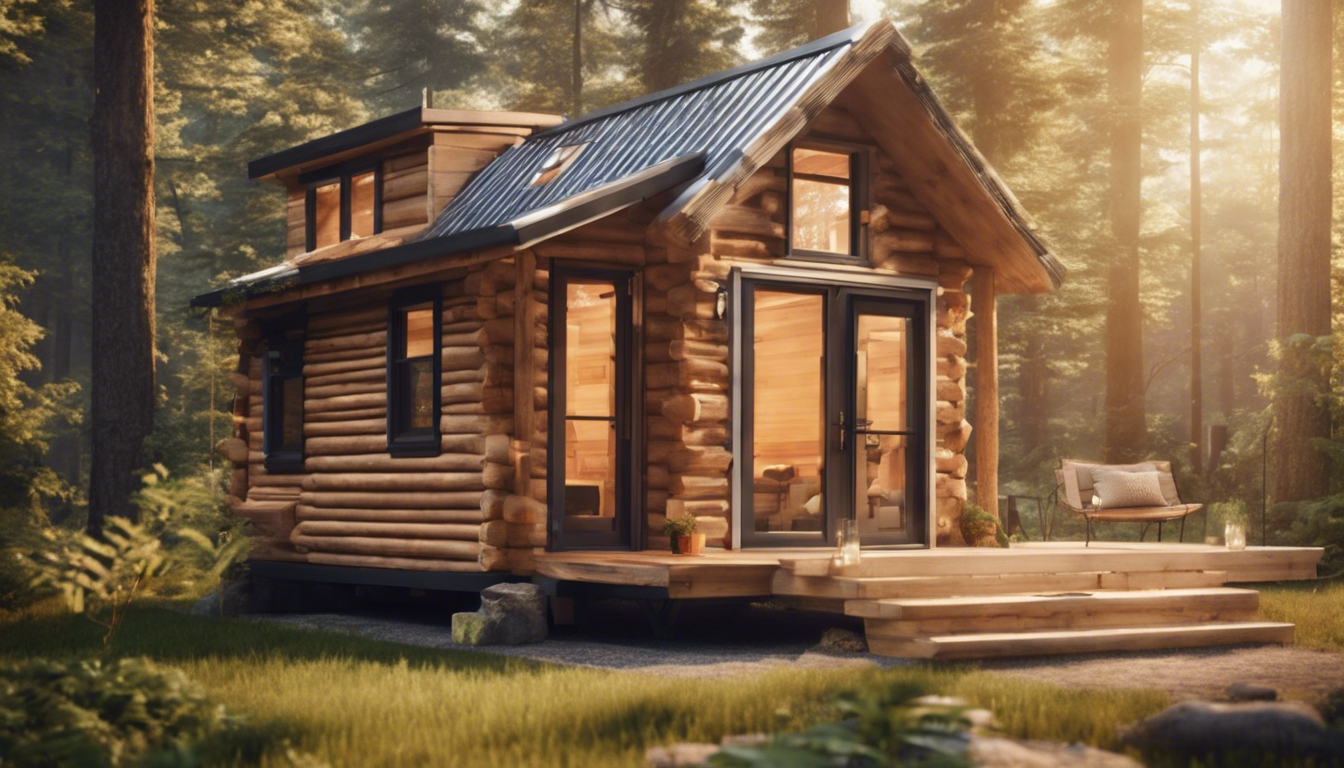Tiny log homes offer a unique blend of charm and practicality.
These small structures have captured the hearts of many seeking a simpler, more sustainable lifestyle.
With their rustic aesthetics and cozy interiors, tiny log homes provide an escape from the chaos of modern living.
This guide will explore what tiny log homes are, the benefits of living in one, design ideas to maximize space, the sustainable aspects of these homes, and tips for building your own.
Design Ideas for Cozy Living Spaces
Tiny log homes offer a unique charm and warmth, perfect for creating cozy living spaces.
To maximize comfort in these compact settings, consider using rustic furnishings that complement the wood textures.
Incorporate soft textiles, like plush throws and decorative pillows, to add warmth and style.
Use multi-functional furniture, such as a sofa bed or storage ottoman, to maintain space while enhancing usability.
Additionally, open shelving can showcase personal items and plants, bringing life into the environment without cluttering it.
The right lighting also plays a crucial role; warm-toned lights can create an inviting atmosphere.
Finally, embracing natural elements in your decor can enhance the tranquil feel of tiny log homes, making them ideal for relaxation.
Sustainable Living with Tiny Log Homes
Tiny log homes are a practical solution for sustainable living.
They use less material and reduce waste compared to larger homes.
Building with logs allows for natural insulation, which helps lower energy costs.
Many tiny log homes are designed to minimize their environmental footprint.
Homeowners can choose eco-friendly materials and incorporate renewable energy sources, like solar panels.
This combination promotes a simpler lifestyle, encourages connection with nature, and reduces reliance on traditional energy.
By embracing tiny log homes, individuals contribute to a greener planet while enjoying the comforts of home.
Tips for Building Your Own Tiny Log Home
Building tiny log homes can be a rewarding project that combines creativity with practical skills.
Start by selecting a suitable location for your log home.
Consider factors like access to utilities and proximity to essential services.
Next, choose high-quality logs that are straight and free from defects.
This choice will enhance the durability of your home.
Plan a simple design that maximizes space and functionality.
Focus on open floor plans with multi-purpose areas to make the most of limited square footage.
Prioritize insulation to manage temperature control and energy efficiency in your tiny log home.
Additionally, consider using natural materials for finishes, which complement the log structure and create a warm atmosphere.
Lastly, be mindful of building codes and permits in your area, as these can impact your project.
With careful planning and execution, you can create a cozy and efficient tiny log home.
Frequently Asked Questions
What are tiny log homes?
Tiny log homes are small dwellings constructed primarily from logs.
Typically ranging from 100 to 400 square feet, they combine rustic charm with efficient use of space, making them ideal for minimalism and cozy living.
What are the benefits of living in a tiny log home?
Living in a tiny log home offers numerous benefits, including reduced living costs, a smaller ecological footprint, simplicity in lifestyle, and the opportunity to connect more closely with nature.
How can I design a cozy living space in a tiny log home?
To create a cozy living space in a tiny log home, focus on open floor plans, multi-functional furniture, and effective storage solutions.
Incorporate warm lighting, natural materials, and personal touches through decor and layout.
Are tiny log homes environmentally friendly?
Yes, tiny log homes are often more environmentally friendly than traditional homes.
They use fewer materials, require less energy for heating and cooling, and promote a sustainable lifestyle by minimizing waste and consumption.
What tips do you have for building my own tiny log home?
When building your own tiny log home, start with a solid plan and understanding of zoning laws.
Choose quality materials, ensure proper insulation, and consider sustainable building practices to maximize efficiency and comfort.




Leave a Reply